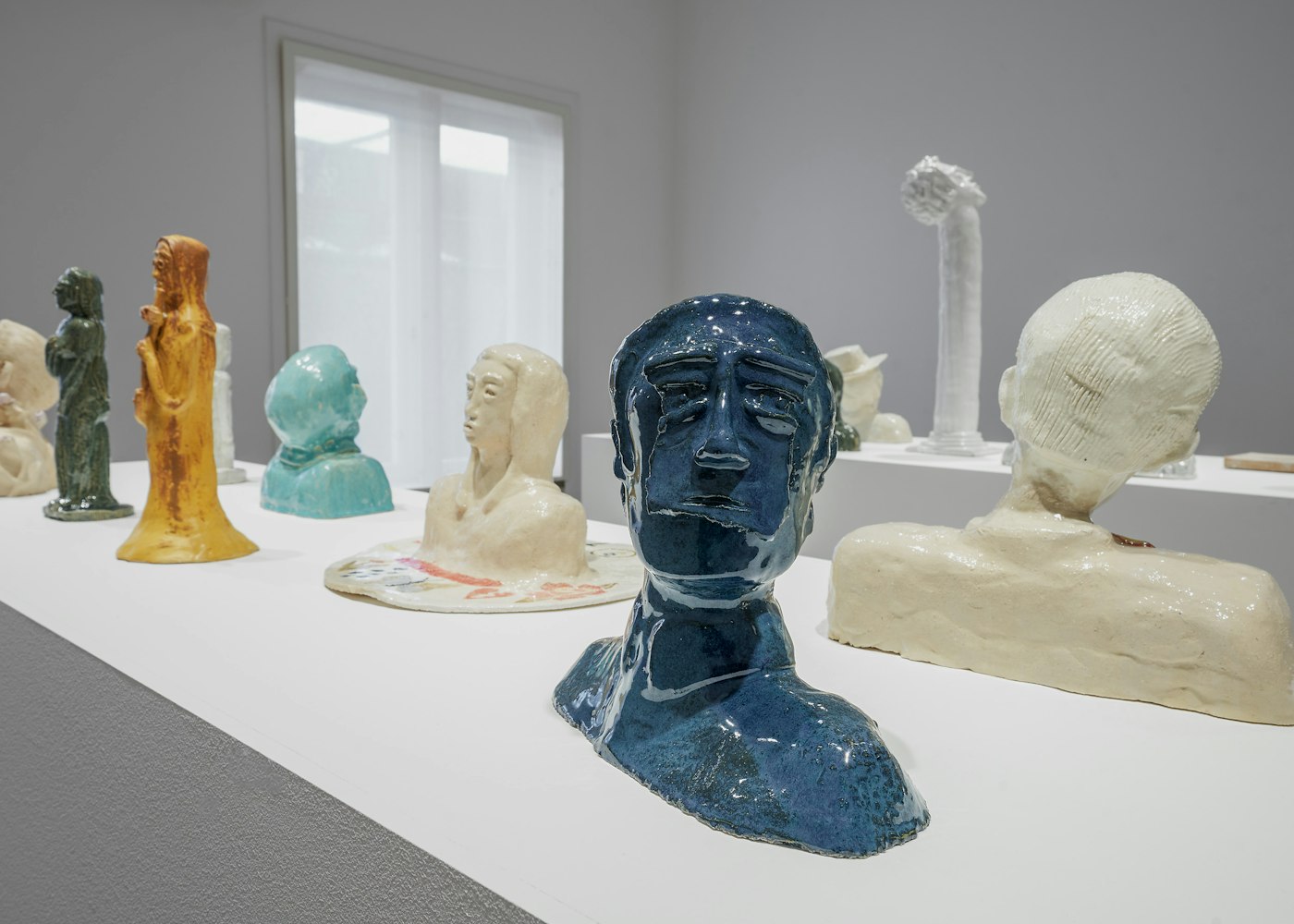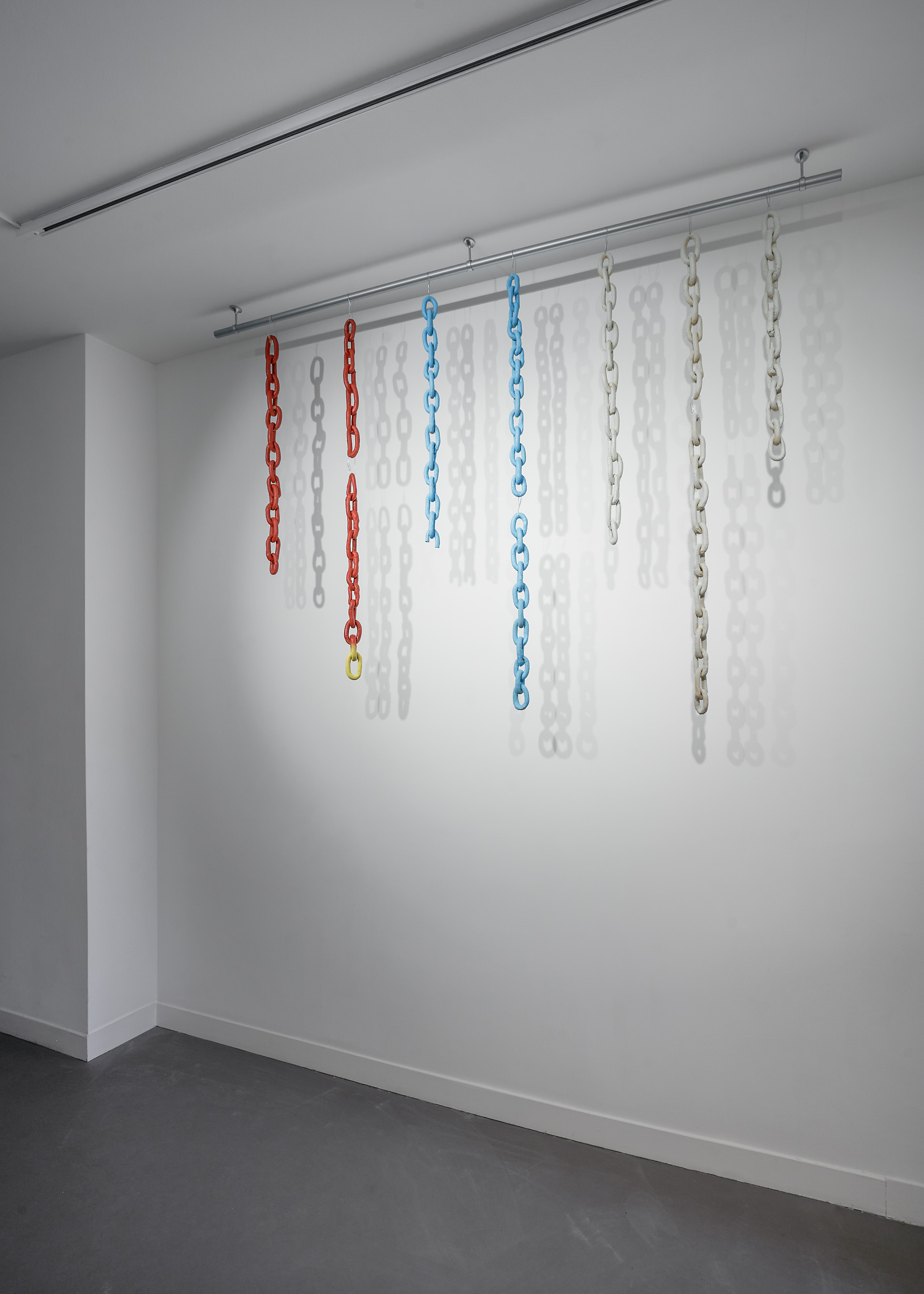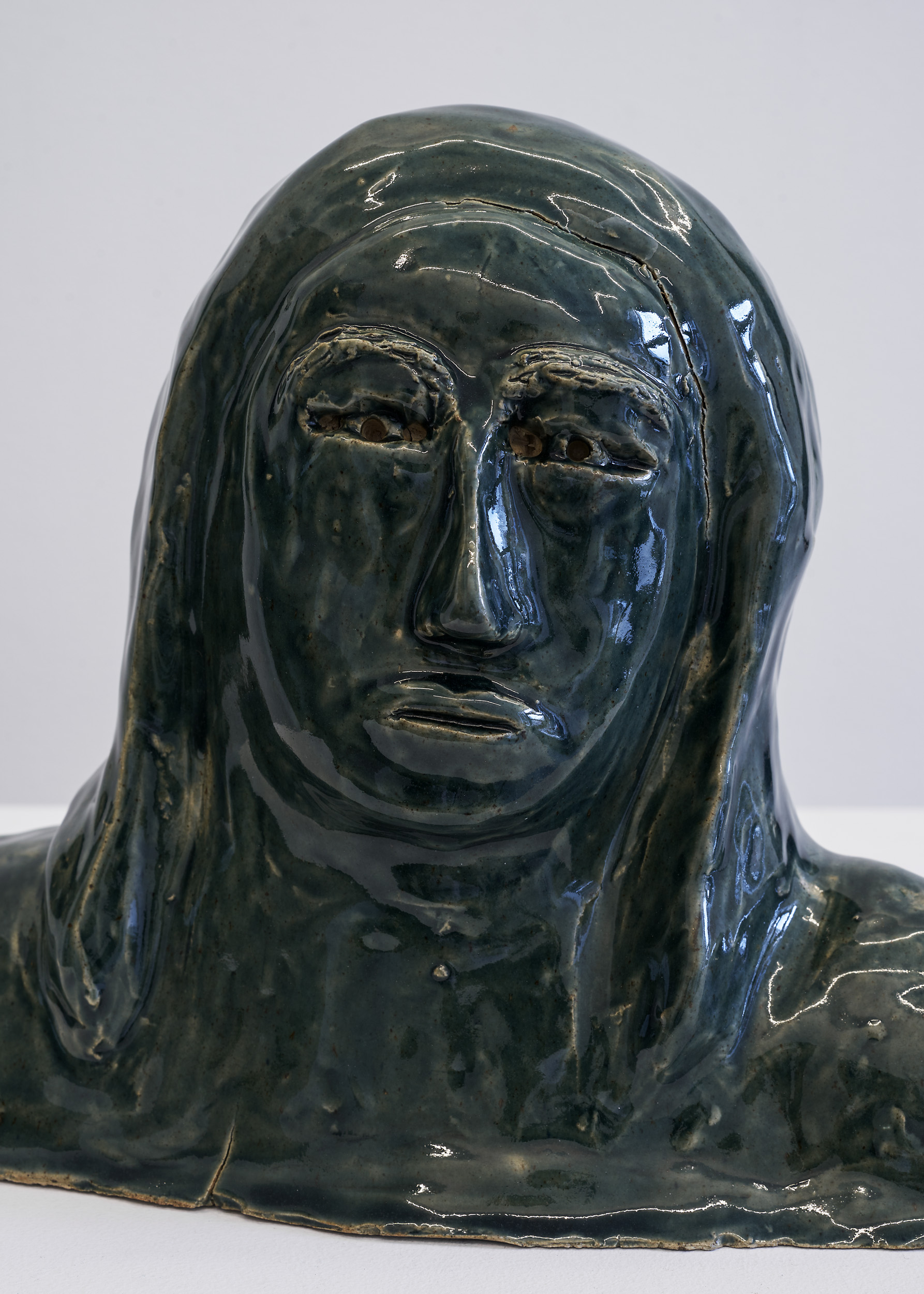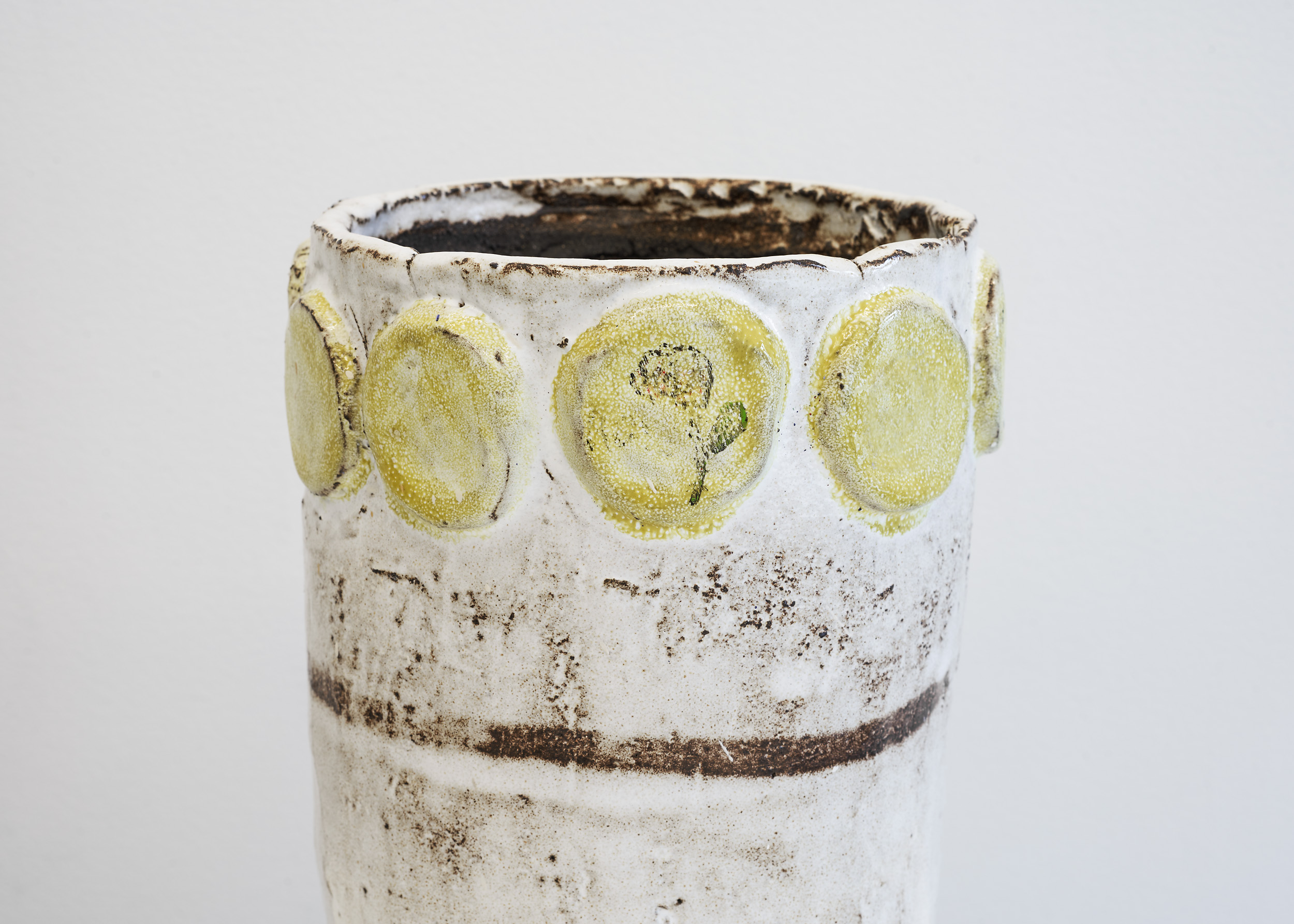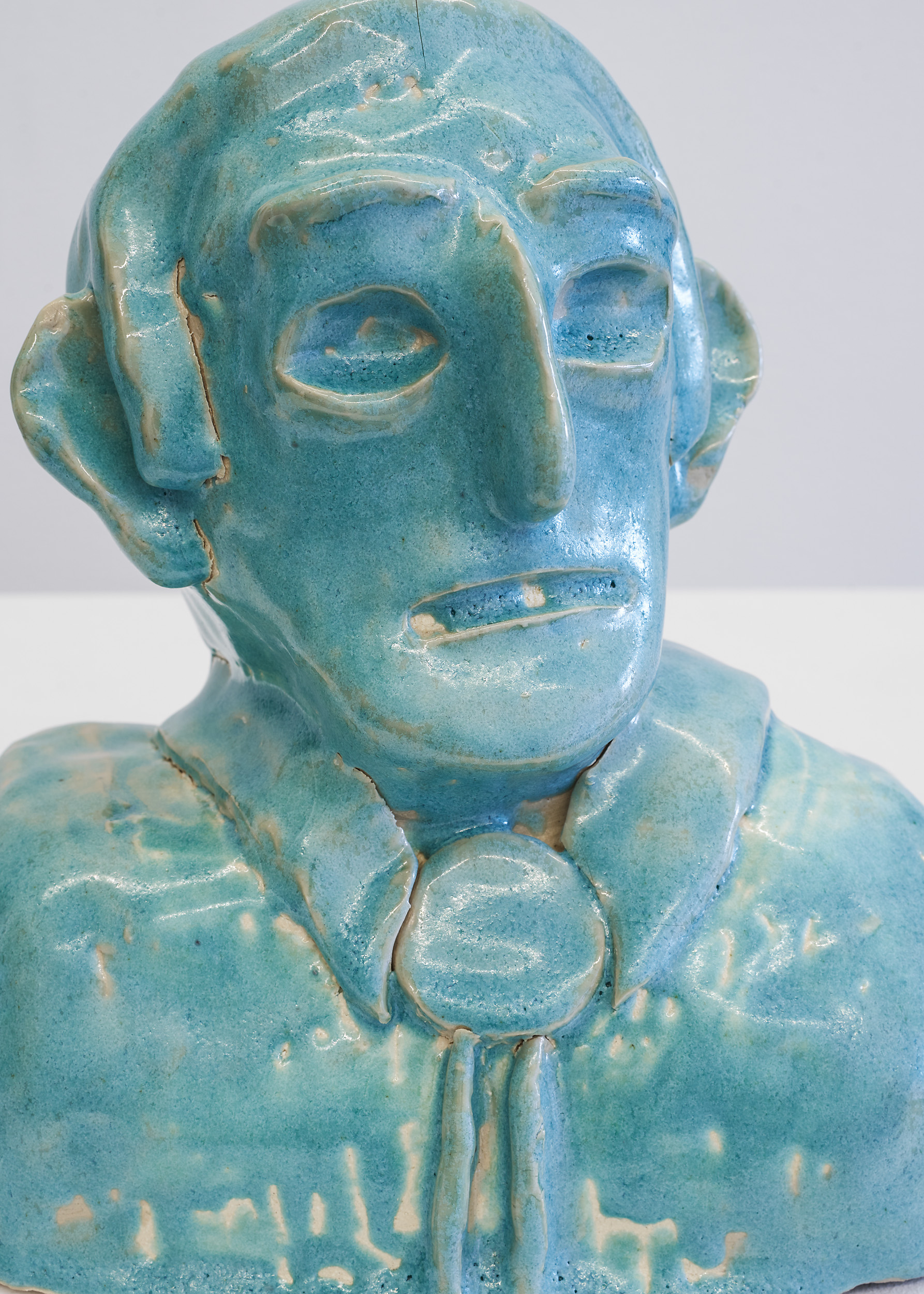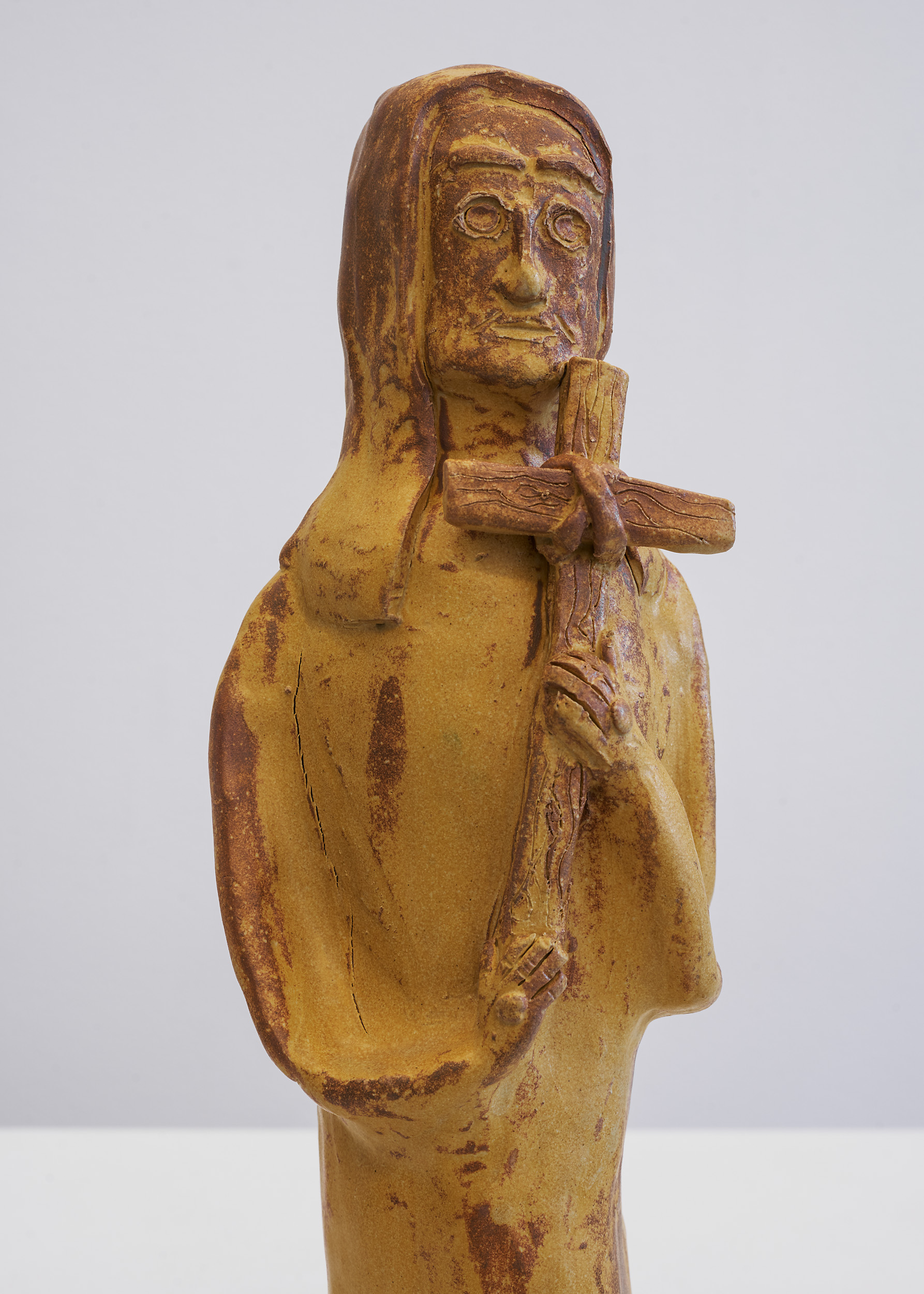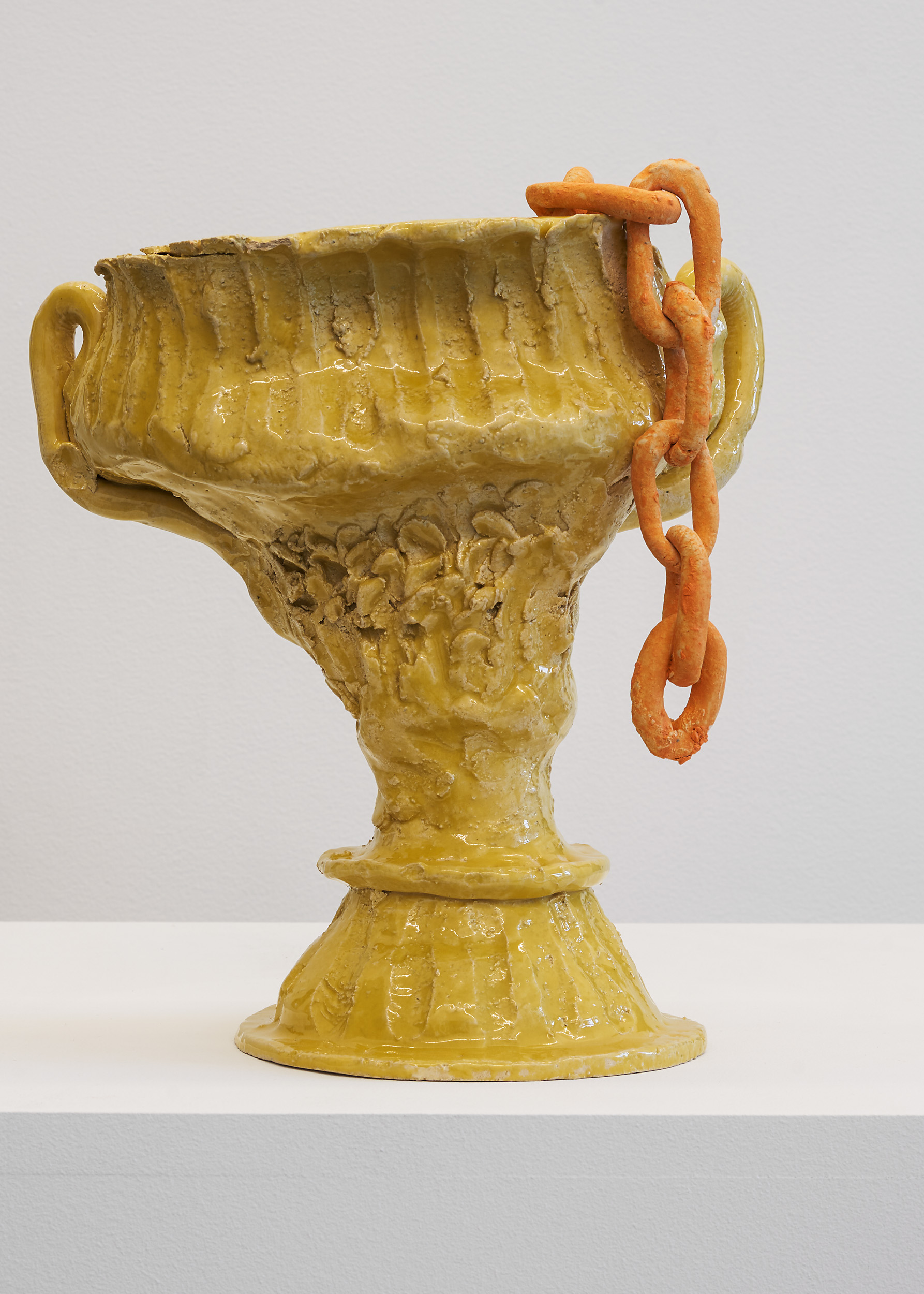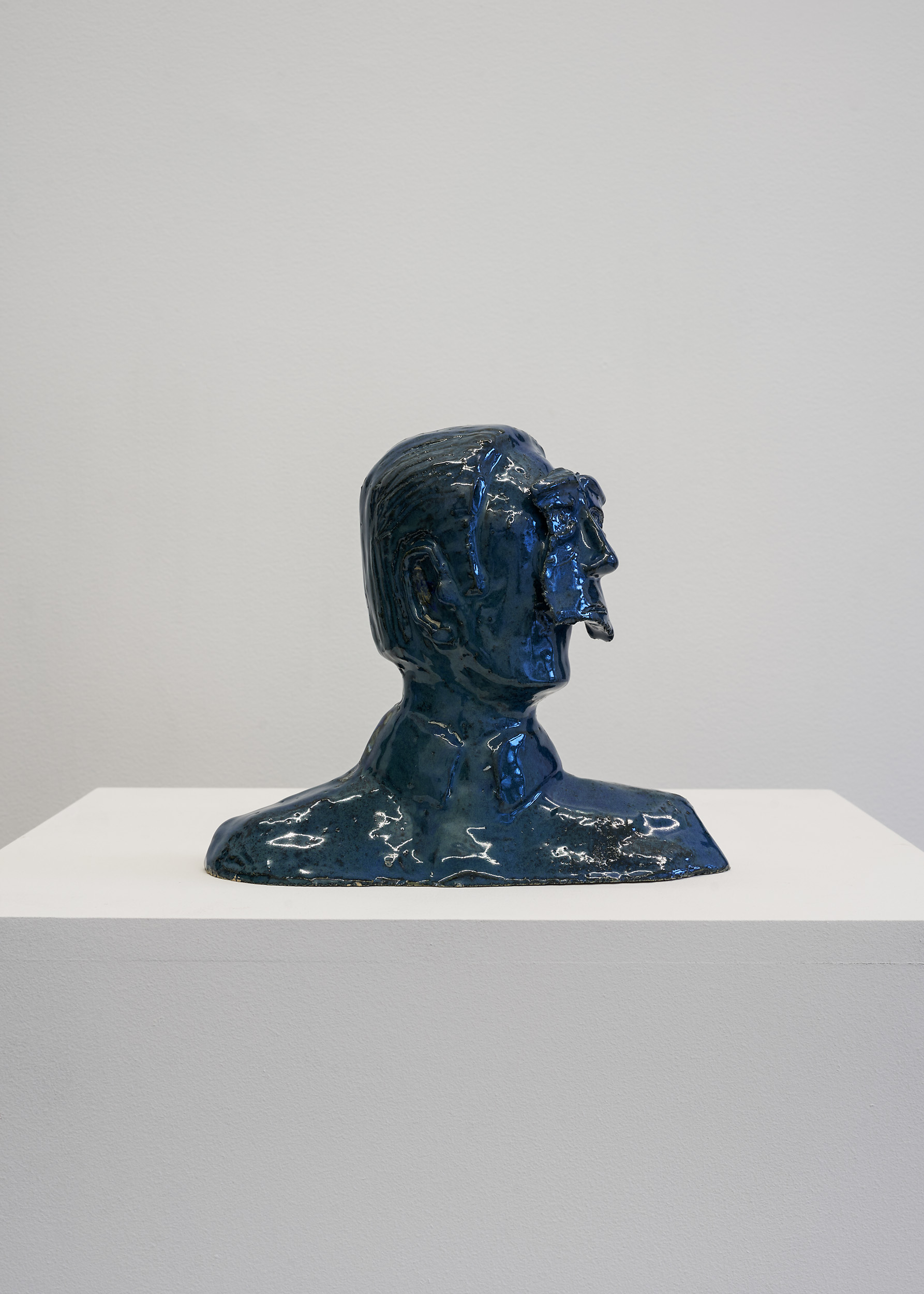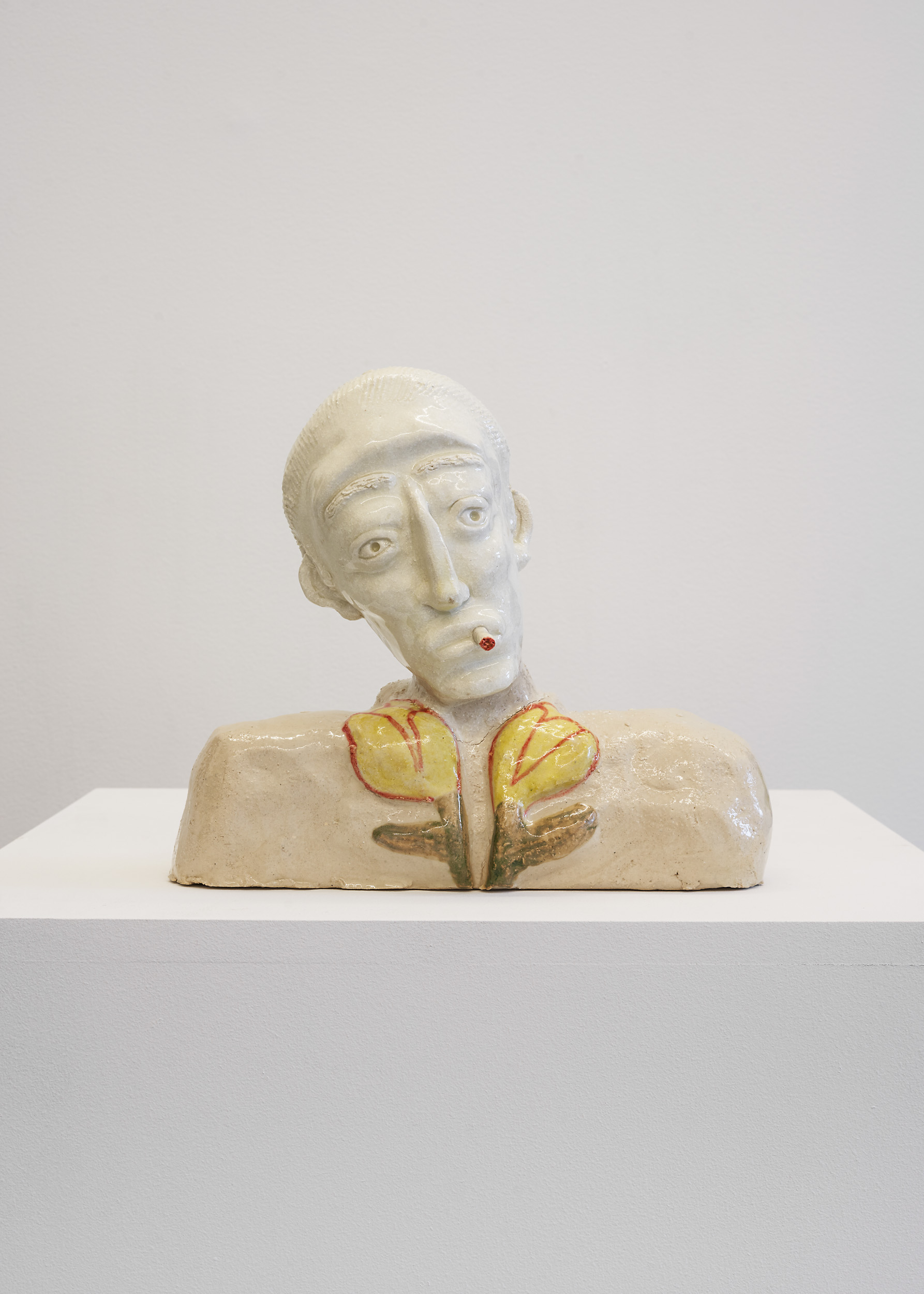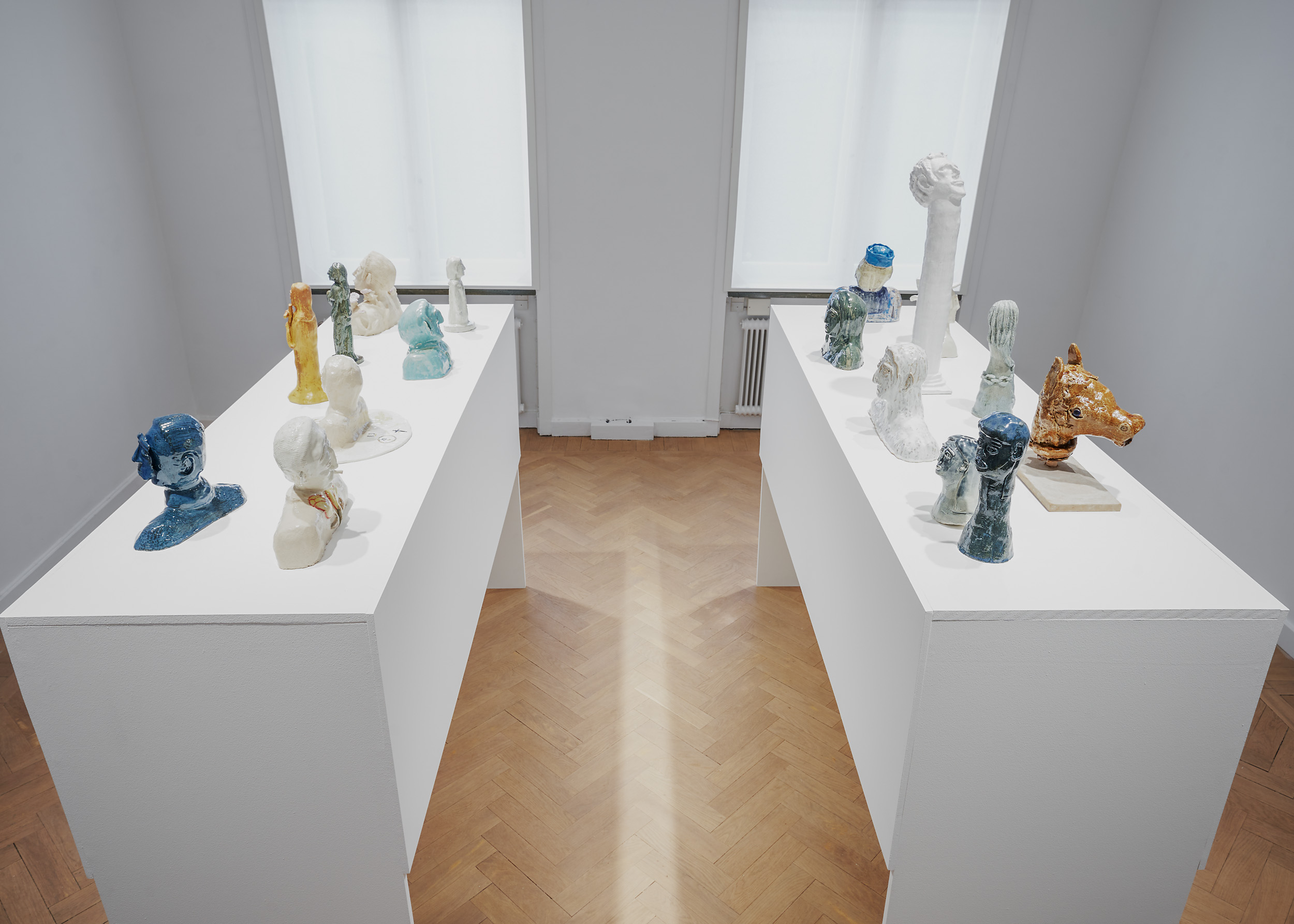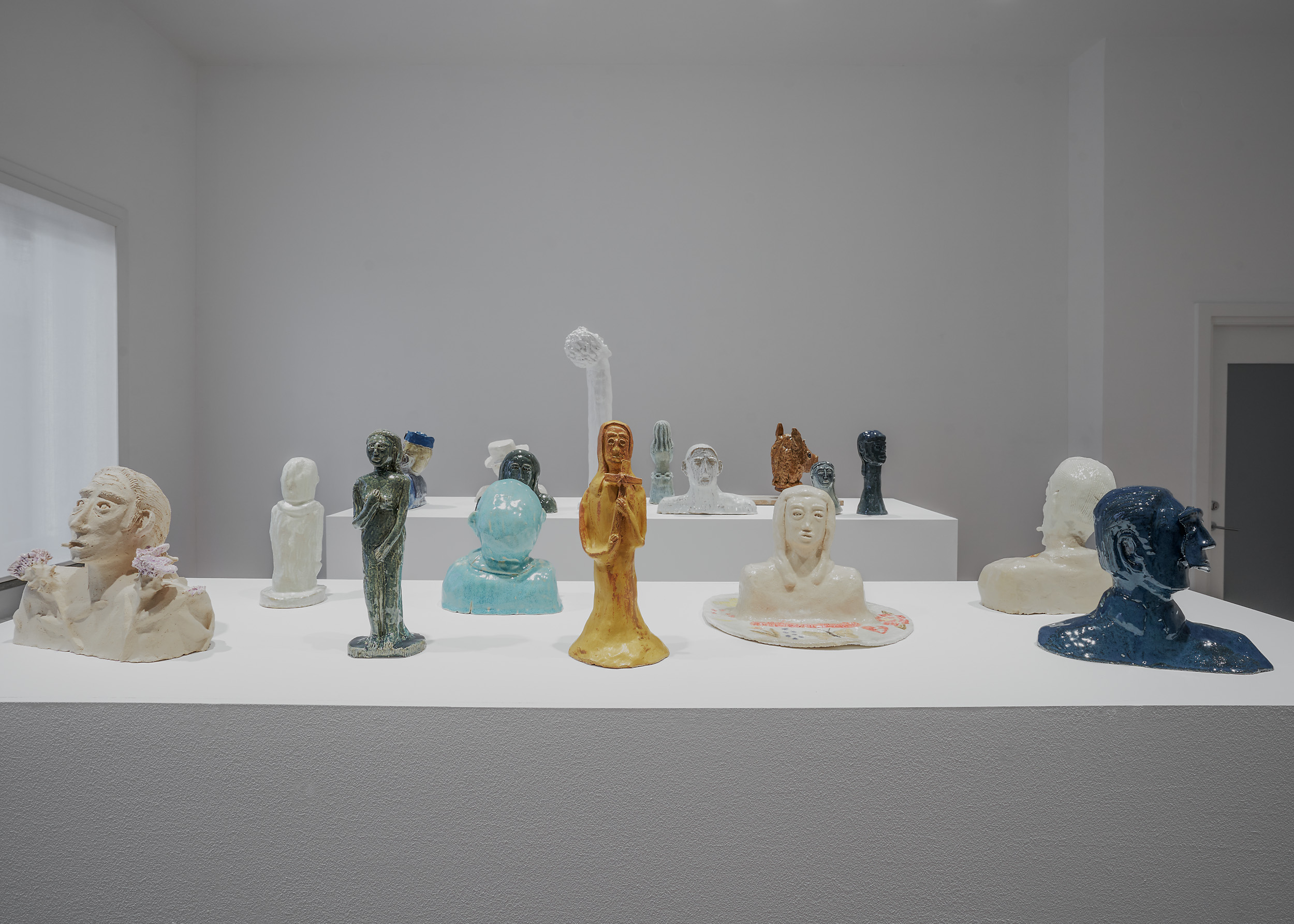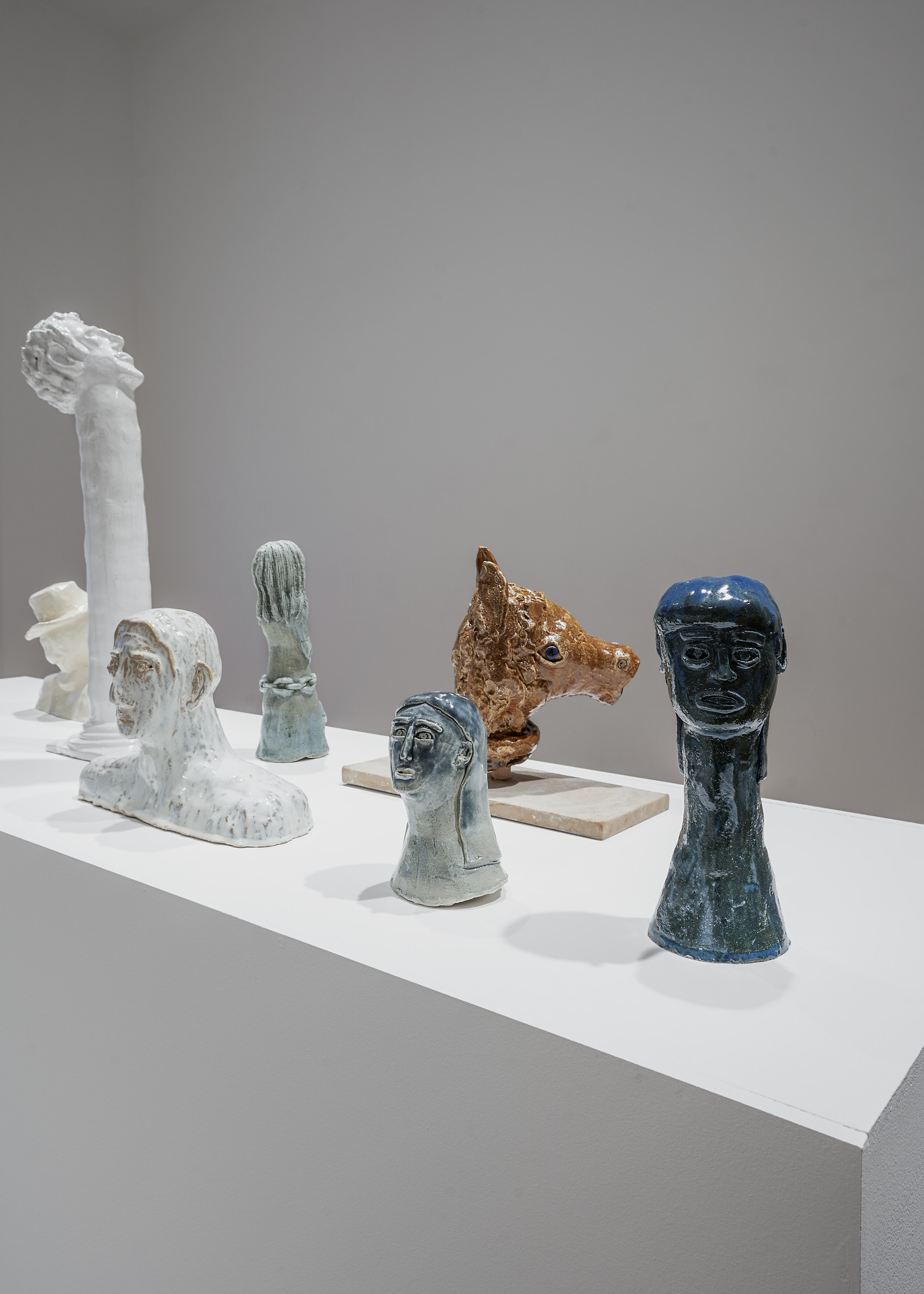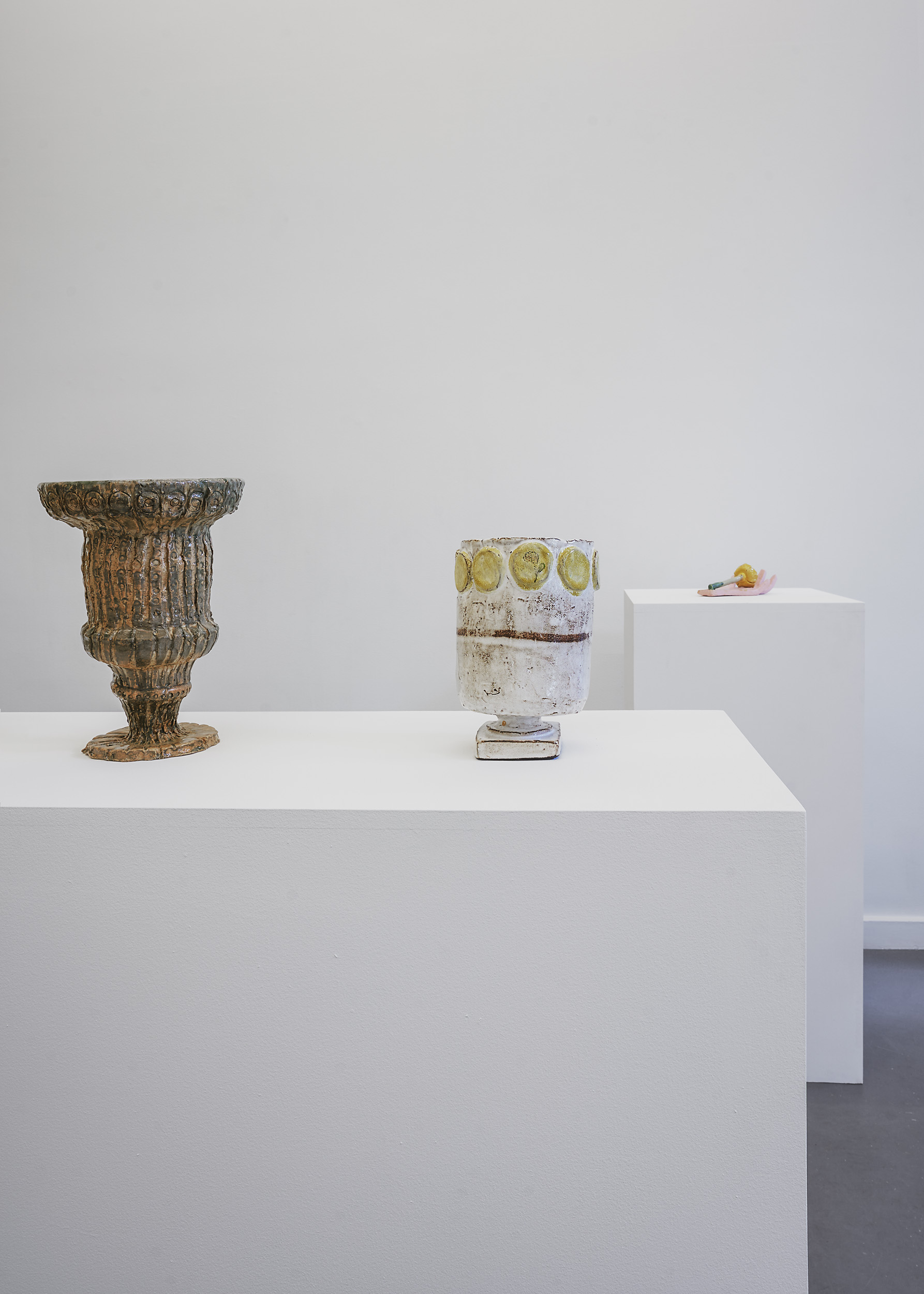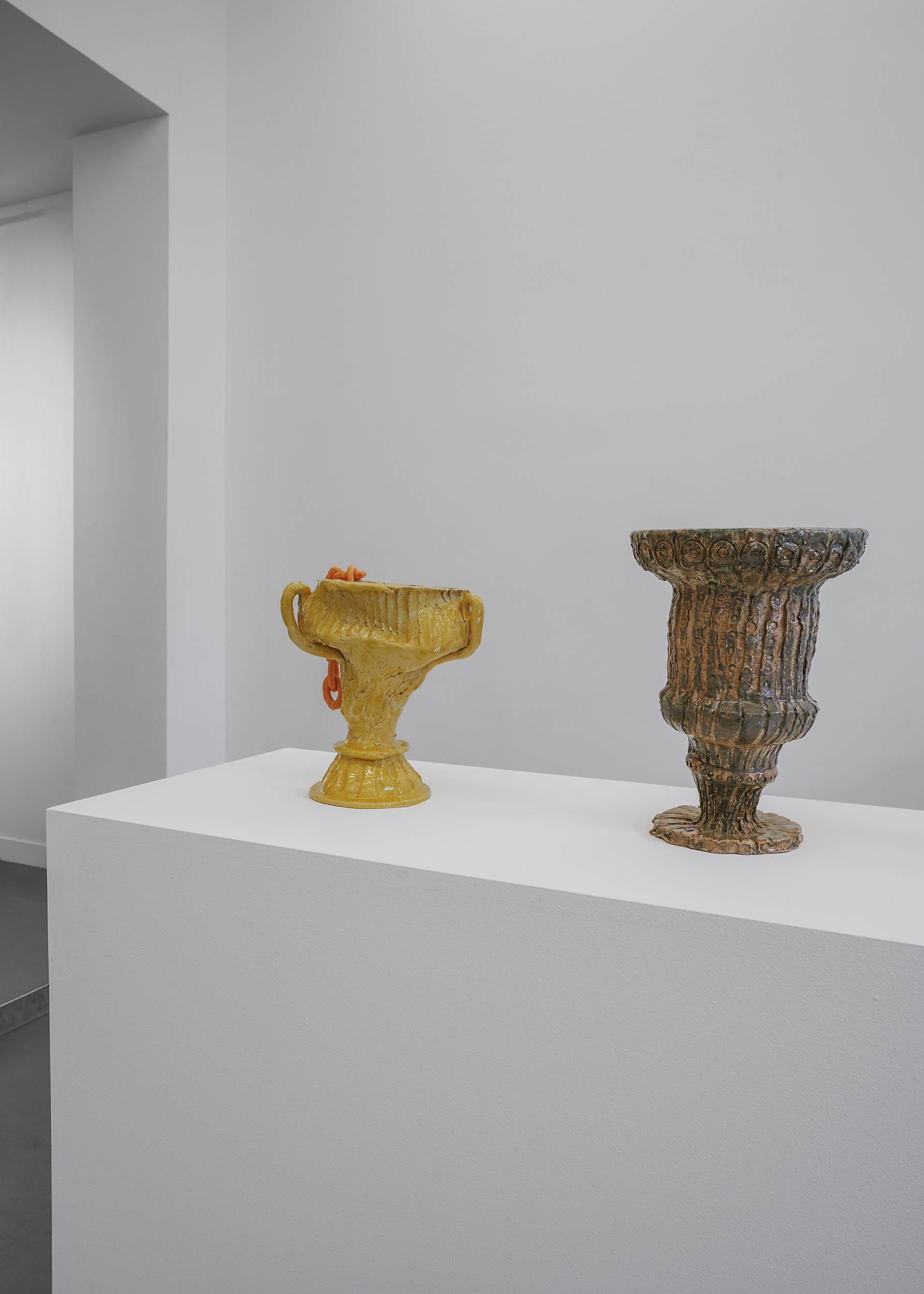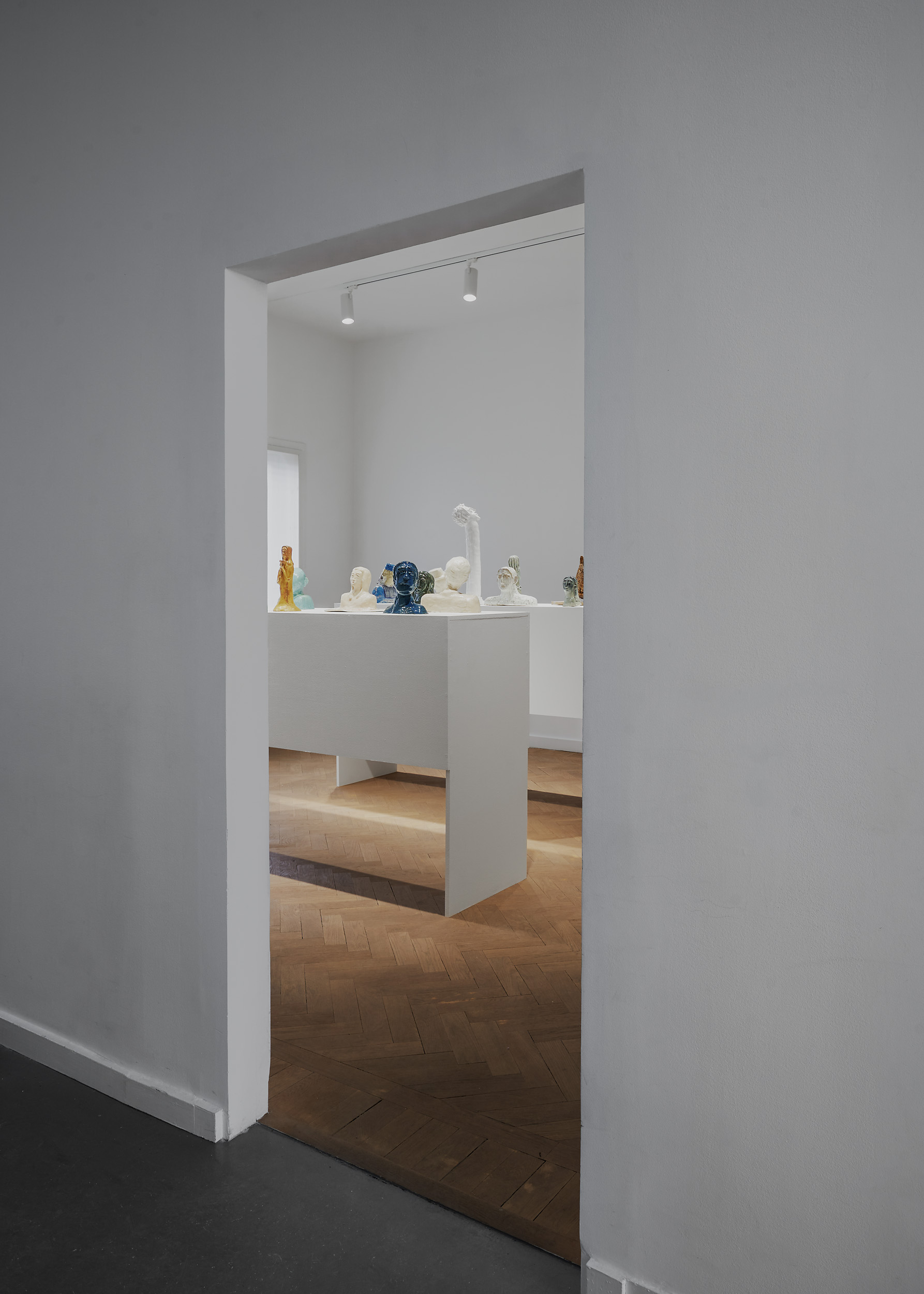Köttet är svagt – The Flesh is Weak
Saskia Neuman Gallery is pleased to present Harry Anderson's first solo exhibition at the gallery, The Flesh is Weak. In a suite of new ceramic works, the artist has taken a new direction where the former expression soberly seeps into mystery and new emotion arise. In this new turn the rhythmicity of the material is released, and its unpredictability celebrated. The exhibition reinforces a feeling of ambivalence towards the various stages of our lives and manifests the artist's own interpretation of what it means to be human.
The title of the exhibition is found in the biblical stating, The spirit is willing, the flesh is weak, which refers to the human soul's qualities of striving and will, which are ultimately defied by the shortcomings and weaknesses of the flesh. In a deep-dive investigation of the self's relationship to the outside world, this exploration is shaped in traditional motifs - distorted by the different states of the artist’s psyche.
In Anderson's practice, several designs of the vase can be found - a design where it’s undeniable role in the canon of history is borne by a thousand-year-old tradition. Its timeless form and material are united by its function of sharing stories. In depictions, ornamentation and illustrations, human history, and the views of our surroundings from the past to the present are clearly reproduced. Early on Anderson sought inspiration in English artist Grayson Perry, whose ceramic works point to trends in contemporary society. There is a wit in Perry’s work that is reflected in autobiographical references and universal topics such as identity and gender, which can be read alongside questions of decor, interior design, and class. In Anderson's vases, writing has intermingled with symbols, signs, and images. They are taken out of context and create a surreal meeting, where new context and insights come to life. The Flesh is Weak opens with three new vases, where the form seems to have swallowed the previous expression often on the surface of Anderson’s work, allowing these new sculptures to express its inner meaning. The work I have changed my name, too many times now, 2023 is shaped by the thought of how it falls to the ground, but instead of being crushed into pieces, a pressing resistance is created that distorts its shape. The three new sculptures set the tone for a new direction in the artist’s practice, where Anderson succeeds in portraying the constant dialogue between process and thought.
In the installation of chains, symbolism of form meets heavy material, and is allowed to hang freely in the air. The chain's connotation of imprisonment and limitation is challenged by its freedom, how the sculptures subtly move, juxtaposing notions of security, stagnation. Like an anchor reaching out to hold a ship in place, the chain becomes a symbol of the artist's foundation and routine. At the same time, the hesitant feelings surrounding the artist’s mission to be a good person are amplified, expanding the belief that we are only as strong as our weakest link. The artist's search for the understanding of an inner balance is constant and weighs between his own strengths, weaknesses, and the acceptance of one’s own limitations.
The idea of weighing between good and evil brings the Anderson’s thoughts to the end of the earth. In his personal interpretation, the only beings saved from hell are animals, and nature. From the fire birds travel in flocks and their innocence colors its wings in all the shades nature have to offer. In the exhibition, they are presented in an installation where they move undisturbed in the room, between the fireplace and the end of the chimney. The color combinations act as a visual passage between past and present. The artist describes how his first experience of the importance of color for humans when he saw "The Wizard of Oz" at a young age. When Dorothy opens her eyes in the land of Oz, the previously black and white canvas has been transformed into a world of color - it is alive and almost tactile. In his artistic practice the element of color is used as a method to contrast the form, text, and images. Color succeeds in distorting the experience and moving the thought between what is good and bad.
In the installation including 17 busts, Anderson extends the traditional format into a surreal expression where a dialogue with the viewer is evoked. Anderson's fascination with architectural ornamentation was awakened by long walks through Stockholm in recent years. It’s often-incomprehensible context provided inspiration for trying to move the motifs' physical representation into the gallery space. These silent sculptures, where the inhabitants are viewed from a distance, are now allowed to meet the viewer where their inevitable gaze creates a new form of presence. Their expressions move beyond realism. The artist's goal is not to reproduce reality, but to create a reality of the same intensity he experiences via his observations throughout the city. In meeting and seeing the faces on the busts, their expression takes us to a new dimension where mystery and emotion allow for a dialogue with their surroundings. Their gaze moves freely in the room, changing in unison, creating unpredictable situations. In this dialogue, there is a shift between object and observer, where we can no longer understand who is observing whom.
Harry Anderson was born in 1986 in Stockholm, where he lives and works. In 2019, Anderson graduated with an MFA from the Royal Danish Academy of Fine Arts in Copenhagen. His work has been presented in several group exhibitions in both Sweden and Denmark.
ARTWORK
PRESS
10.05.2023
Odalisque Magazine ↗Art & Culture
12.05.2023
lohi Journal ↗Philip Warkander
